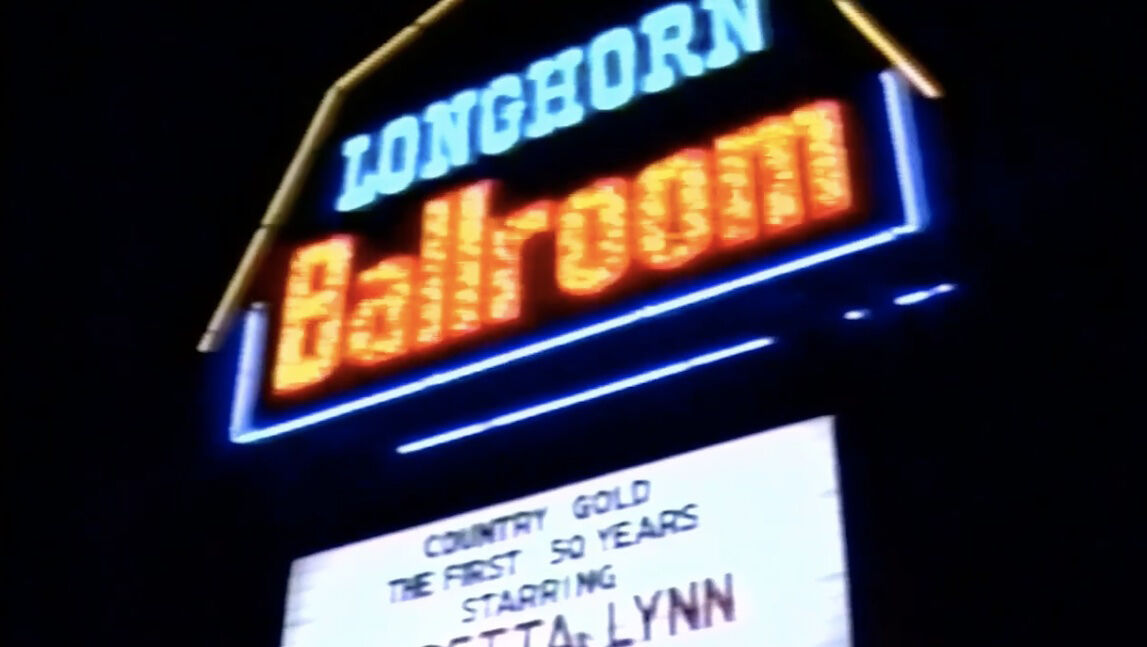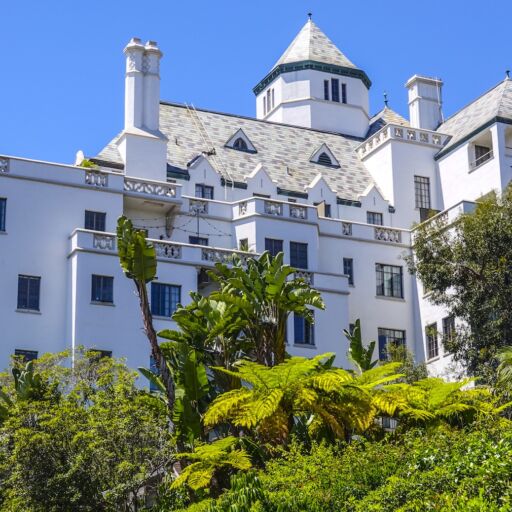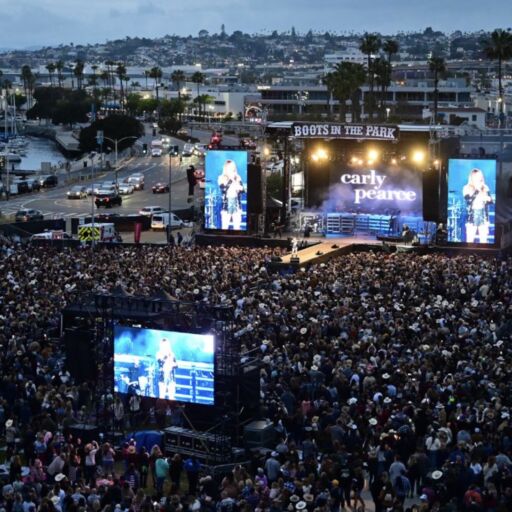This story is part of our first-ever music special, which includes the results of our music survey, the resulting top music cities ranking and an in-depth look at the most travel-worthy music cities across the country. See all the coverage here.
Few stages in Texas have seen as much as the Longhorn Ballroom’s. There was the Sex Pistols show in January 1978, one of the 10 the band played in America, that ended a beleaguered tour with a near riot. Bassist Sid Vicious’ nose got broken on the Dallas venue’s stage when a woman from the audience punched him in the face. He responded by writing “gimme a fix” in his blood on his chest. The Pistols broke up soon after, and Vicious died of an overdose of heroin the next year.
There’s an iconic photo of Nat King Cole playing a show in 1954 that doesn’t make the rounds on Twitter quite like the Sex Pistols did. It shows Cole crooning on the Longhorn’s stage to a packed house, with tables of well-dressed Black couples in the front row and legions of suited-up white men standing behind them. Everyone is rapt. Black performers were limited to bookings one night a week before the Civil Rights Act passed — a Monday when folks in the service industry had the day off, and its owner would close the place down and lease it to other bookers. Charley Pride had one the longest-running residencies at the club and is said to be tied with Al Green for the best-selling shows of its heyday. B.B. King, Ray Charles and James Brown played there, and The Rolling Stones stopped during one of their tours to catch a set by blues singer Bobby “Blue” Bland. “I don’t think there are any venues left in Dallas that have the kind of collective curated legacy the Longhorn does,” says Jeff Liles, the Kessler Theater’s artistic director. “Not with that across-the-board representation for every kind of music that exists.”
Yet the Longhorn Ballroom has been off the radar for most Dallasites, and musicians, since the turn of the century and officially closed since 2019, a victim of decades of changing owners that let the place fall into disrepair. The Longhorn reopened on Thursday (March 30) under the ownership of Edwin Cabaniss, who also owns the Kessler Theater in Oak Cliff, a 500-person room with arguably the best sound in the state. With its 2,500 capacity and extensive history, the Longhorn is a significantly bigger project.
Cabaniss and his backers contributed $10 million in improvements while the city contributed over $4 million, much of which will be in infrastructure in the area, D magazine reports. The venue’s first shows include Americana acts Asleep at the Wheel and Emmylou Harris, as well as an up-and-coming country act Morgan Wade with Lucero and Kaitlin Butts. “We think the right direction for the space is to showcase the same genre as it did historically, that includes country, R&B, soul and rock ‘n’ roll,” Diana Cox, the director of operations at Kessler Presents, says.
The Longhorn Ballroom originally opened as the Bob Wills’ Ranch House, conceived as a place for Texas’ own Western swing singer Bob Wills and his Texas Playboys band in 1950. Sadly, Wills’ lousy accountant took the tax money the singer paid him but didn’t pay the tax bills. Texas Monthly reported that Wills had to sell off all his publishing, including his signature song “San Antonio Rose,” to pay off the IRS, but still lost the venue. By some twist of fate, a character named Jack Ruby — best known as the gangster who shot Lee Harvey Oswald after the assassination of President John F. Kennedy — took over management in the early ’50s for a very short time. He stepped down after suffering a self-described nervous breakdown. An unopened safe Ruby left behind decades ago is a feature in the Longhorn’s VIP redesigned room. To say the joint has history feels like understating things.
The person most associated with the Longhorn Ballroom, however, is Douglas “Dewey” Groom, who handled it after Ruby tapped out and bought it outright in 1958, holding on to it until 1985. Under his patronage, it was renamed the Longhorn Ranch and then the Longhorn Ballroom when people wouldn’t stop calling to ask about selling cattle. He didn’t like when people called it a honky-tonk, although it was. In addition to hosting legendary country concerts, a list that includes George Jones, Willie Nelson and Patsy Cline, Loretta Lynn and Johnny Cash taped an NBC special there. Groom’s son, Doug, joined him in booking in the ’80s, landing Patti Smith and the Ramones.
The Longhorn has suffered from what some consider a curse since Dewey’s last night, New Year’s Eve of 1985, shifting from owner to owner but never quite recovering the luster of its heyday. It was under new management in 1986 by the same guy who was running the Dallas branch of the Hard Rock Cafe; a then-24-year-old Liles came in to book the place. He was one of the people who caught that infamous Sex Pistols show, but his favorite show at the Longhorn was Fela Kuti, just before he started working there. “It revealed to me this whole community that I didn’t even know existed in Dallas, of mostly Nigerian people,” he says. “And it was packed.”
Raul Ramirez owned it after that, from 1996 to 2007, opening a restaurant onsite. An entrepreneur named Jay LaFrance bought it from him in 2016. But, despite local excitement, LaFrance’s stewardship only led to a series of one-off shows and corporate events, ending in loan default and bankruptcy. In 2021, news broke that Cabaniss was purchasing it amid a flurry of development in the Cedars neighborhood, an artistic hamlet that has clawed its way back since the construction of I-30 in the ’60s separated it from downtown. On the Akard road from the freeway to the Longhorn, you’ll see Off the Bone Barbecue, Sandwich Hag, Autonomous Society Brewers and Lee Harvey’s — a collection of hip eateries and a dive bar where local bands frequently play. The Longhorn, which is on a parcel of land called Rock Island, is, as D magazine senior editor Zac Crain describes it, “firmly in an industrial zone.” “It’s desolate, and it can be scary, if you want to be scared,” he says. “Edwin is the first person who we can trust to get this ambitious project done.”
The Kessler crew have a lot of plans for the Longhorn Ballroom, but the sound was first on the list — Kessler properties are known for the sound systems. A new gallery wall of headshots of the notable acts who played the venue will line the entrance, with a special box of memorabilia and photos of Bob Wills and his band. On the other side of the room, a space is cordoned off to hold exhibits on some of the most notable historic moments from the Longhorn’s history, including newly purchased photos of that infamous night with the Sex Pistols. The venue plans to work with the city to find a docent who can give tours to local schools. And, during construction, the workers found what is believed to be a remnant of one of the original Western murals from the first days of the Longhorn; it will be preserved under a layer of Plexiglass. As part of the renovation plans, the Longhorn itself will finally be submitted to the Register of Historic Places. Its iconic billboard is already in.
In the coming years, the Kessler organization plans to expand, adding on an outdoor amphitheater behind the Longhorn and opening a recording studio in the building next door, as well as bringing in local restaurants and chefs for pop-ups. The aim is to make it more than a concert venue, and turn it into the living museum for music that it is.




